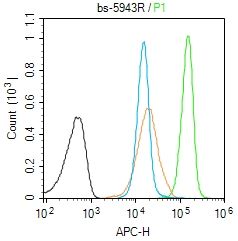Multitasking protein, involved in apoptosis, transcription, nucleosome assembly and histone binding. Isoform 2 anti-apoptotic activity is mediated by inhibition of the GZMA-activated DNase, NME1. In the course of cytotoxic T-lymphocyte (CTL)-induced apoptosis, GZMA cleaves SET, disrupting its binding to NME1 and releasing NME1 inhibition. Isoform 1 and isoform 2 are potent inhibitors of protein phosphatase 2A. Isoform 1 and isoform 2 inhibit EP300/CREBBP and PCAF-mediated acetylation of histones (HAT) and nucleosomes, most probably by masking the accessibility of lysines of histones to the acetylases. The predominant target for inhibition is histone H4. HAT inhibition leads to silencing of HAT-dependent transcription and prevents active demethylation of DNA. Both isoforms stimulate DNA replication of the adenovirus genome complexed with viral core proteins; however, isoform 2 specific activity is higher.
Function:
ultitasking protein, involved in apoptosis, transcription, nucleosome assembly and histone binding. Isoform 2 anti-apoptotic activity is mediated by inhibition of the GZMA-activated DNase, NME1. In the course of cytotoxic T-lymphocyte (CTL)-induced apoptosis, GZMA cleaves SET, disrupting its binding to NME1 and releasing NME1 inhibition. Isoform 1 and isoform 2 are potent inhibitors of protein phosphatase 2A. Isoform 1 and isoform 2 inhibit EP300/CREBBP and PCAF-mediated acetylation of histones (HAT) and nucleosomes, most probably by masking the accessibility of lysines of histones to the acetylases. The predominant target for inhibition is histone H4. HAT inhibition leads to silencing of HAT-dependent transcription and prevents active demethylation of DNA. Both isoforms stimulate DNA replication of the adenovirus genome complexed with viral core proteins; however, isoform 2 specific activity is higher.
Subunit:
Isoform 1 and isoform 2 interact directly with each other and with ANP32A within the tripartite INHAT (inhibitor of acetyltransferases) complex. Isoform 1 and isoform 2 interact also with histones. Isoform 2 is a component of the SET complex, which also contains ANP32A, APEX1, HMGB2 and NME1, but not NME2. Within this complex, directly interacts with NME1 and with HMGB2. Interacts with SETBP1. Interacts with SGOL1. Interacts with APBB1.
Subcellular Location:
Cytoplasm > cytosol. Endoplasmic reticulum. Nucleus > nucleoplasm. In the cytoplasm, found both in the cytosol and associated with the endoplasmic reticulum. Following CTL attack, moves rapidly to the nucleus, where it is found in the nucleoplasm, avoiding the nucleolus. Similar translocation to the nucleus is also observed for lymphocyte-activated killer cells after the addition of calcium. The SET complex is associated with the endoplasmic reticulum.
Tissue Specificity:
Widely expressed. Low levels in quiescent cells during serum starvation, contact inhibition or differentiation. Highly expressed in Wilms' tumor
Post-translational modifications:
Isoform 2 is phosphorylated on Ser-15 and Thr-23.
Isoform 2 is acetylated on Lys-11.
Some glutamate residues are glycylated by TTLL8. This modification occurs exclusively on glutamate residues and results in a glycine chain on the gamma-carboxyl group.
N-terminus of isoform 1 is methylated by METTL11A/NTM1. Mainly trimethylated.
DISEASE:
Note=A chromosomal aberration involving SET is found in some cases of acute undifferentiated leukemia (AUL). Translocation t(6;9)(q21;q34.1) with NUP214/CAN.
Similarity:
Belongs to the nucleosome assembly protein (NAP) family.
SWISS:
Q01105
Gene ID:
6418
Database links:
Entrez Gene: 6418 Human
Entrez Gene: 56086 Mouse
Entrez Gene: 671392 Mouse
Entrez Gene: 307947 Rat
SwissProt: Q01105 Human
SwissProt: Q9EQU5 Mouse
SwissProt: Q63945 Rat
| Picture |
Blank control (Black line):Molt4 (Black).
Primary Antibody (green line): Rabbit Anti-SET antibody (SL5943R)
Dilution: 1μg /10^6 cells;
Isotype Control Antibody (orange line): Rabbit IgG .
Secondary Antibody (white blue line): Goat anti-rabbit IgG-AF647
Dilution: 1μg /test.
Protocol
The cells were fixed with 4% PFA (10min at room temperature)and then permeabilized with 90% ice-cold methanol for 20 min at room temperature. The cells were then incubated in 5%BSA to block non-specific protein-protein interactions for 30 min at room temperature .Cells stained with Primary Antibody for 30 min at room temperature. The secondary antibody used for 40 min at room temperature. Acquisition of 20,000 events was performed.
|
|
|
